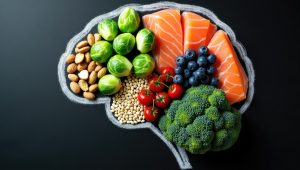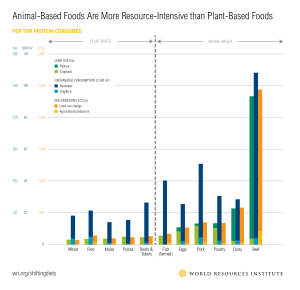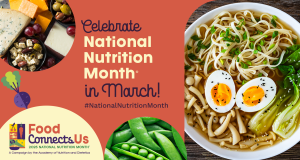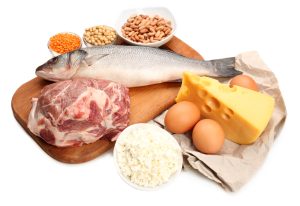
by Suzanne Holloway | Aug 1, 2025
The term “freshman 15” describes the widespread belief that college students gain fifteen pounds during their first year. This concept originated in the mid-to-late 1980s, with a 1985 peer-reviewed article reporting an average weight gain of 8.8 pounds in women. Later, in 1989, Seventeen magazine popularized the phrase by chronicling a student’s struggle with first-year weight gain. Despite its popularity, the evidence behind the “freshman 15” experience is limited. Furthermore, studies have been somewhat inconsistent, with some observing weight gain, others showing weight loss, and/or no change in weight. For example, a 2008 study found weight changes ranging from -5 to +20 pounds with an average of roughly +3 pounds.
For most students, the “freshman 15” is more accurately a “freshman 5.” Both numbers, though, are broad generalizations, and real experiences vary. Starting college marks a major life transition: the independence, new routines, and unique pressures involved can all influence well-being. As a result, some students may gain weight, others might lose weight, and some may see no change at all. Nonetheless, it is important to note that weight and body mass index (BMI) should not be used as sole indicators for health since they do not factor in lifestyle behaviors and body composition.
College Wellness Tips
Looking to build healthy habits in college? Here are some wellness tips and resources to help incoming and current college students.
Eating Habits
With limited access to kitchens, many freshmen rely on dining halls, restaurants, and convenience stores for food. The abundance of choices, particularly at dining halls, including many tempting comfort foods, can easily lead to mindless eating, especially during times of stress or homesickness. Just because your parents aren’t there to remind you doesn’t mean you should stop eating fruits and vegetables; they remain an essential part of a healthy diet and lifestyle. Practicing mindful eating by paying attention to hunger cues, savoring your food, and choosing a balanced meal can make it easier to nourish your body, avoid overeating, and feel your best.

© ActionGP / Adobe Stock
Sleeping Habits
Poor or inconsistent sleep can undermine both physical and mental health, impairing cognitive function and even increasing appetite (which can contribute to overeating and weight gain). Good sleep hygiene is vital—try to keep a regular bedtime, limit caffeine, nicotine, and alcohol late in the day, avoid screens before sleep, and wind down with relaxing activities like reading or meditation.
Stress Management
Stress triggers the release of cortisol, sometimes called the “stress hormone.” When stress is chronic (long-term), cortisol remains high and disrupts the body, slowing metabolism, increasing fat storage (especially in the abdomen), raising blood sugar, and fueling cravings for calorie-dense comforting foods. This can explain why people often “eat their feelings” and reach for familiar or sugary snacks during tough times. Chronic stress is also linked to conditions like depression, high blood pressure, metabolic disorders (e.g., obesity), and fatigue. Healthy ways to cope with stress include seeking social support, building a consistent sleep routine, practicing mindful eating, and staying physically active.
University Student Wellness Resources
If you’re struggling with your physical or mental health, don’t hesitate to reach out. Most universities offer support services for students, such as Florida Agricultural and Mechanical University, Florida State University, and the University of Florida.
Additional Sources
University of Georgia
University of Utah

by Amy Mullins, PhD, RDN | Aug 1, 2025

Good nutrition is important to cognitive function. (Adobe Stock Image)
The Connection Between Nutrition and Memory: How Food Affects Cognitive Function
Memory is a complex and multifaceted cognitive function that plays a vital role in our daily lives. From remembering important events and appointments to recalling learned skills and knowledge, memory is essential for our overall well-being and success. While genetics and lifestyle factors can influence memory, a growing body of research suggests that nutrition also plays a significant role in cognitive function and memory.
The Importance of Nutrition for Memory
A well-balanced diet that includes a variety of whole foods, such as fruits, vegetables, whole grains, lean proteins, and healthy fats, provides the necessary nutrients and building blocks for optimal brain function. The brain is a hungry organ, accounting for approximately 20% of the body’s total energy expenditure. Adequate nutrition is essential for maintaining healthy brain cells, facilitating communication between neurons, and supporting the growth and development of new neural connections.
Key Nutrients for Memory
Several nutrients have been identified as essential for supporting memory and cognitive function. These include:
- Omega-3 fatty acids: These healthy fats, particularly EPA and DHA, are found in fatty fish, nuts, and seeds. Omega-3s support brain cell membrane structure and function, promoting healthy communication between neurons.
- Vitamin D: This essential vitamin is obtained through sun exposure, dietary sources, and supplements. Vitamin D receptors are found in brain cells, and research suggests that vitamin D plays a role in regulating neurotransmitter function and protecting against age-related cognitive decline.
- B Vitamins: B vitamins, particularly B6, B9 (folate), and B12, are essential for synthesizing neurotransmitters and maintaining healthy brain cells. Foods rich in B vitamins include leafy greens, legumes, whole grains, and lean meats.
- Antioxidants: Antioxidants, such as vitamins C and E, and polyphenols found in fruits, vegetables, and tea, help protect brain cells from oxidative stress and inflammation, which can damage memory and cognitive function.
- Magnesium: This essential mineral supports neuronal function and synaptic plasticity, facilitating learning and memory. Foods rich in magnesium include dark leafy greens, nuts, and whole grains.
Dietary Patterns Associated with Better Memory
Research has identified several dietary patterns that are associated with improved memory and cognitive function. These include:
- Mediterranean diet: Characterized by high intake of fruits, vegetables, whole grains, lean proteins, and healthy fats, the Mediterranean diet has been shown to support cognitive function and reduce the risk of age-related cognitive decline.
- DASH diet: The DASH (Dietary Approaches to Stop Hypertension) diet, developed to reduce blood pressure, emphasizes whole grains, fruits, vegetables, lean proteins, and low-fat dairy products.
- Plant-based diet: A diet rich in plant-based foods, including fruits, vegetables, legumes, and whole grains, has been associated with improved cognitive function and a reduced risk of age-related cognitive decline.
Tips for Supporting Memory through Nutrition
- Eat a balanced diet: Focus on whole, unprocessed foods, including fruits, vegetables, whole grains, lean proteins, and healthy fats.
- Stay hydrated: Adequate hydration is essential for maintaining cognitive function and supporting memory.
- Limit processed and sugary foods: These foods can lead to inflammation and oxidative stress, which can damage brain cells and impair memory.
- Consider supplements: If you’re concerned about getting enough nutrients through diet alone, consider consulting with a healthcare professional about supplementing with omega-3s, vitamin D, and other essential nutrients.
Conclusion
While genetics and lifestyle factors can influence memory, nutrition plays a critical role in supporting cognitive function and memory. By incorporating a balanced diet rich in whole foods, essential nutrients, and healthy fats, you can support optimal brain function and reduce the risk of age-related cognitive decline.
References:
During the preparation of this work the author used the AI tool, NaviGator. After using this tool/service, the author reviewed and edited the content as needed and takes full responsibility for the content of the publication. Image source: Adobe Stock

by Suzanne Holloway | Apr 28, 2025
Dietary protein is an important macronutrient for human health, and it can be found in a wide variety of foods. To learn more about the basics of protein, check out this earlier article.
Types of Protein Sources
Before we explore the different types of protein food sources, it is important to think about what else comes with it. When you eat foods that are rich in protein, you are also getting other things like fats, fiber, sodium, and other nutrients. Current evidence suggests that the “protein package,” has a greater impact on our health than the amount of protein eaten.
Traditional Animal-based

Source: World Resource Institute (Click on the image to see a larger version.)
Traditional sources like beef, pork, lamb, poultry, and seafood usually come from farms or wild sources. These proteins are complete protein sources because they contain all nine essential amino acids: histidine, isoleucine, leucine, lysine, methionine, phenylalanine, threonine, tryptophan, and valine. Additionally, animal-based protein is referred to as “high-quality” protein due to its high concentration of amino acids and digestibility, rather than its impact on human health or the environment. Regardless, it is important to note that not all animal-based proteins are created the same.
Red and Processed Meats
Red meats like beef, pork, and lamb, and processed meats, such as luncheon meats, hot dogs, and jerky, are high in saturated fats; furthermore, processed meats also contain a high amount of sodium. High intake of red meat, especially processed meats, has been linked to increased risk of cardiometabolic diseases, like heart disease, stroke and type 2 diabetes, and various cancers.
Dairy
Dairy products like milk, cheese, and yogurt are good sources of calcium, protein, and other important nutrients. But they can also have a lot of saturated fat, so it is better to consider the low-fat options.
Poultry and Eggs
Poultry, like chicken and turkey, is defined as a “high quality” and complete protein source like red meat. However, poultry, unlike red meat, generally has a lower saturated fat content; a notable exception to this generalization is duck. Eggs are also a complete source of protein with healthy fats and other nutrients.
Seafood
Seafood, such as salmon, Pacific oysters, tuna, and whitefish contain important types of omega-3 fatty acids, like eicosapentaenoic acid (EPA) and docosahexaenoic acid (DHA). Omega-3 fatty acids are a type of polyunsaturated or “healthy” fat; they play an important role in cellular membrane function and support the function of the cardiovascular and endocrine systems. The major concern involved in consuming seafood, specifically fish, is the amount of mercury present; however, these levels vary between species. For advice on eating fish, check out this article from the FDA.
Plant-based
Beans, Peas, Lentils, Grains, and Soy
Beans, peas, and lentils are great plant-based proteins that also give you fiber, vitamins, and minerals. However, typically, a single type of bean, pea, or lentil does not constitute a complete protein by itself. It is advised to mix different types or add other foods to get complete protein, like the classic combination of rice and beans. Soybeans and soy products, like tofu and tempeh, are also a good source of protein, especially for those on a vegan and vegetarian diet. Rice is also a good source of protein, but like other plant-based sources, does not provide a complete protein and should be combined with other foods to ensure adequate intake.
Nuts and Seeds
Nuts and seeds like almonds, peanuts, chai seeds, and sunflower seeds, are a good source of protein and healthy fats. However, due to their high fat and calorie content be mindful of your portion sizes. Quinoa, which is often classified as a pseudo-cereal but is a seed, is a complete protein.
Microbe-based
Microbial protein comes from microorganisms, mainly fungi (such as yeasts and filamentous fungi), microalgae (like cyanobacteria), and bacteria. The utilization of microbes for protein and food processing is not a new idea and can be observed in the making of bread, yogurt, and cheese, as well as in the direct consumption of yeast and algae. Two of the most well-known types of microbe-based proteins are nutritional yeast and spirulina. Some of the limitations of microbe-based proteins are the cost and product quality. They are not considered a complete protein because microbial protein only has eight out of the nine essential amino acids.
Insect-based
The practice of consuming insects, such as grasshoppers, ants, bees, and caterpillars, has long been established in several cultures throughout South and Central America, Africa, Asia, Oceania, and Europe. Insect-based protein is similar in quality to that from livestock but is more resource-efficient. However, it is important to consider species-specific health concerns, such as potential microbial, allergenic, and toxicological risks.
Cultivated Animal-based
Cultivated or lab-grown meat is an innovative technology that could transform the traditional meat industry. This process involves extracting cells from an animal, without slaughter, and then the cells are grown, harvested, and processed into meat for human consumption. The first lab-grown meat, a beef burger patty that cost $330,000, was developed by a scientist in the Netherlands in 2013. Since then, technological advancements have expanded product offerings to include cell-cultivated versions of pork, chicken, and seafood. The significant challenges facing the cultivated meat industry include scaling up production, reducing the costs of finished products, and replicating the taste and texture of conventional animal products. Still, since it comes from animal cells, it is a complete protein source.
Conclusion
Each protein source comes with its unique set of nutrients, which collectively impact our health more than the protein content alone. Understanding the complexities of each protein source—from traditional animal-based proteins to innovative lab-grown meats—helps us make informed dietary choices that align with our needs and considerations.
Additional Sources
Harvard Health
American Heart Association
World Resources Institute
The Nutrition Source
An Equal Opportunity Institution.

by Amy Mullins, PhD, RDN | Apr 2, 2025
Inflammation is a natural response of the body’s immune system, designed to protect us from infection and injury. However, chronic inflammation is a complex condition characterized by a persistent and low-grade inflammatory response that can lead to various diseases including arthritis, diabetes, cardiovascular disease, neurodegenerative diseases, and cancer.

Diet contributes to chronic inflammation in the body.
Chronic inflammation can be caused by various factors, including:
- Genetic predisposition: Certain genetic mutations can affect the body’s inflammatory response, making it more prone to chronic inflammation.
- Environmental factors: Exposure to pollutants, stress, and other environmental stressors can trigger chronic inflammation.
- Lifestyle factors: Sedentary lifestyle, smoking, and poor diet can contribute to chronic inflammation.
While genetics, environmental, and lifestyle factors contribute to chronic inflammation, diet is a controllable risk factor that plays a significant role in its development and exacerbation. There are many common foods in the American diet that are responsible for promoting inflammation in the body.
Some of the most common pro-inflammatory foods include:
- Processed and Packaged Meats: hot dogs, processed deli meats, bacon, and sausage. This includes meat that has been smoked, cured, salted, dried, or canned.
- Refined Carbohydrates: white bread, bakery foods (such as cookies, cakes, and pastries), processed cereals, white rice and pasta.
- Fried Foods: French fries, fried chicken, fried fish, fried vegetables, and fried sweets such as doughnuts.
- Processed and High-Sugar Foods & Beverages: candy, chocolate, soda, energy drinks, and fruit drinks.
- Foods High in Saturated and Trans Fats: red meat (such as beef and pork), processed meats, whole milk, cheese, ice cream, butter, coconut oil, and partially hydrogenated oils (such as margarine and processed snack foods).
- Vegetable & Seed Oils High in Omega-6 Fatty Acids: canola oil, corn oil, soybean oil, peanut oil, safflower, and sunflower oils are often used in frying and production of ultra-processed or convenience foods. Also high in omega-6 fatty acids are mayonnaise and most salad dressings. Although omega-6 fatty acids are essential in the diet, excess intake of omega-6 oils can promote inflammation in the body when not balanced with enough omega-3 fatty acids.
Why do these foods contribute to chronic inflammation?
- High sugar and refined carbohydrate content: Consuming high amounts of sugar and refined carbohydrates can contribute to insulin resistance, a precursor to chronic inflammation.
- Saturated and trans fats: These fats can promote inflammation by altering the body’s fatty acid composition and disrupting the balance of omega-6 and omega-3 fatty acids.
- Presence of AGEs: Foods cooked at high temperatures, such as charred meats and fried foods, contain advanced glycation end products (AGE), which can cause oxidative stress and stimulate inflammation by binding to specific receptors on immune cells.
- Processed and high-sodium content: Processed foods often contain high amounts of sodium, which can lead to inflammation and cardiovascular disease.
- Lack of essential nutrients: Many pro-inflammatory foods are low in essential nutrients, leading to nutrient deficiencies that can contribute to inflammation.
To reduce chronic inflammation, focus on limiting or avoiding pro-inflammatory foods and incorporating more anti-inflammatory foods and nutrients into the diet.
Nutrients That Can Help Reduce Inflammation
- Omega-3 fatty acids: These essential fatty acids can help reduce inflammation and promote healing.
- Vitamin D: Vitamin D deficiency has been linked to increased inflammation.
- Antioxidants: Antioxidants, such as vitamins C and E, can help reduce oxidative stress and inflammation.
- Probiotics: Probiotics can help maintain a healthy gut microbiome, which is essential for reducing inflammation.
Foods that Reduce Inflammation
- Leafy Greens: Leafy greens like spinach, kale, and collard greens are rich in antioxidants and flavonoids, which can help reduce inflammation.
- Fatty Fish: Fatty fish like salmon, sardines, and mackerel are rich in omega-3 fatty acids, which can help reduce inflammation.
- Berries: Berries like blueberries, raspberries, and strawberries are rich in antioxidants and flavonoids, which can help reduce inflammation.
- Nuts and Seeds: Nuts and seeds like walnuts, chia seeds, and flaxseeds are rich in omega-3 fatty acids and antioxidants, which can help reduce inflammation.
- Turmeric: Turmeric contains a compound called curcumin, which has potent anti-inflammatory and antioxidant properties.
- Ginger: Ginger has anti-inflammatory compounds called gingerols and shogaols, which can help reduce inflammation.
- Green Tea: Green tea is rich in antioxidants and polyphenols, which can help reduce inflammation.
- Olive Oil: Olive oil is rich in antioxidants and anti-inflammatory compounds, which can help reduce inflammation.
What can you do to improve your diet? Here are some strategies to help you get started:
- Choose whole, unprocessed foods: Focus on whole grains, fruits, vegetables, lean proteins, and healthy fats.
- Stay hydrated with water: Replace sugary drinks with water. Adequate hydration can help to reduce inflammation and oxidative stress.
- Cook at home: Prepare meals using fresh ingredients to control the amount of sugar, salt, and unhealthy fats in your diet.
- Read labels: Be aware of the ingredients and nutritional content of packaged foods, and choose options that are lower in added sugars, saturated fats, and sodium.
- Gradually transition to a balanced diet: Replace pro-inflammatory foods with anti-inflammatory ones and gradually adjust your diet over time.
By making informed choices about the foods we eat and incorporating anti-inflammatory foods into our diet, we can reduce our risk of chronic inflammation and promote overall health and well-being.
References:
During the preparation of this work the author used the AI tool, NaviGator. After using this tool/service, the author reviewed and edited the content as needed and takes full responsibility for the content of the publication.
Photo source: https://stock.adobe.com/1277005967 and /532657650

by Samantha Kennedy | Feb 27, 2025

National Nutrition Month helps promote healthy eating for individuals and families. (Photo source: Academy of Nutrition and Dietetics, eatright.org)
Maintaining a healthy diet is more crucial than ever. According to the Academy of Nutrition and Dietetics, a nutritious, balanced eating plan is essential for optimal health at every stage of life. Healthy eating not only helps manage weight and prevent chronic diseases but also boosts mental well-being and energy levels.
Healthy eating involves consuming a variety of foods that provide the nutrients needed to maintain health, feel good, and have energy. These nutrients include protein, carbohydrates, fat, water, vitamins, and minerals. A balanced diet includes fruits, vegetables, whole grains, and lean proteins, which are vital for maintaining a healthy body and mind.
The benefits of healthy eating are numerous. It can reduce the risk of chronic diseases such as heart disease, diabetes, and cancer. Additionally, a nutritious diet supports brain function, improves mood, and enhances overall quality of life. For instance, incorporating more fruits and vegetables into your diet can provide essential vitamins and minerals that boost your immune system and keep you feeling energized.
Beyond its nutritional value, food has a unique ability to bring people together. The theme for National Nutrition Month 2025, “Food Connects Us,” highlights how food plays a significant role in our social lives.
Sharing meals is a universal experience that transcends cultural and geographical boundaries. It fosters a sense of community and belonging, whether it is a family dinner, a holiday feast, or a casual get-together with friends.
Food connects us to our heritage and traditions. Many cultures have specific dishes that are passed down through generations, each with its own story and significance. These culinary traditions are often at the heart of celebrations and rituals, reinforcing cultural identity and continuity.
Moreover, preparing and sharing meals can strengthen relationships. Cooking together can be a fun and educational activity that encourages teamwork and communication. It provides an opportunity to learn about different ingredients, cooking techniques, and cultural practices. Eating together allows for meaningful conversations and the sharing of experiences, which can deepen bonds and create lasting memories.
Promoting both healthy eating and the social aspects of food can be achieved through various initiatives. National Nutrition Month encourages people to make informed food choices and develop sound eating and physical activity habits.
Communities can organize events such as cooking classes, nutrition workshops, and communal meals to educate and engage people in healthy eating practices. Schools and workplaces can also play a role by providing nutritious meal options and creating environments that support healthy lifestyles. Encouraging family meals at home can help children develop healthy eating habits and strengthen family connections.
Healthy eating is vital for maintaining physical and mental well-being. At the same time, food has the power to bring people together, fostering a sense of community and connection. By embracing both the nutritional and social aspects of food, we can enhance our health and enrich our lives.
An Equal Opportunity Institution

by Suzanne Holloway | Feb 27, 2025
Defining Proteins
Proteins are important macronutrients, just like carbohydrates and fats. They are large, complex molecules that play numerous roles in the body. For instance, proteins help in building and repairing structures, performing bodily functions, and regulating various processes within the body. You can find proteins essentially everywhere in the body from bones, muscles, enzymes, hormones, skin, and blood.
About Amino Acids
Proteins are composed of smaller parts called amino acids. These amino acids join together to form long, folded chains known as polypeptides. There are 20 different types of amino acids, each with unique properties. Our bodies cannot produce nine specific amino acids, so we need to get them from our food. There are conditionally essential amino acids, which are necessary only during times of sickness and stress. Furthermore, the body can make nonessential amino acids even if they are not present in the foods we eat. Here’s a quick look at these amino acids:
| Name |
Classification |
| Alanine |
Nonessential |
| Arginine |
Conditionally Essential |
| Asparagine |
Nonessential |
| Aspartic acid |
Nonessential |
| Cysteine |
Nonessential |
| Glutamic acid |
Nonessential |
| Glutamine |
Conditionally Essential |
| Glycine |
Conditionally Essential |
| Histidine |
Essential |
| Isoleucine |
Essential |
| Leucine |
Essential |
| Lysine |
Essential |
| Methionine |
Essential |
| Phenylalanine |
Essential |
| Proline |
Conditionally Essential |
| Serine |
Conditionally Essential |
| Threonine |
Essential |
| Tryptophan |
Essential |
| Tyrosine |
Conditionally Essential |
| Valine |
Essential |

Meat, poultry, fish, dairy, beans, and legumes are all good sources of protein. (Adobe Stock photo)
Recommendations
But how much protein do you need? This varies based on several factors such as weight, height, age, sex, and activity level. Generally, 10% to 35% of your daily calories should come from protein. In terms of weight, it’s recommended that a person consumes about 0.36 grams of protein per pound of body weight. It is important to know that one gram of protein provides four calories.
For a 2,000-calorie diet, the daily intake of protein could range from 200 to 700 calories.
For a 200-pound person, the daily intake of protein could be 72 grams.
To determine your recommended protein intake, use one of the following methods:
- Multiply your daily caloric intake by 0.10 – 0.35.
- Multiply your weight by 0.36.
- Use this Dietary Reference Intakes (DRI) Calculator.
However, if you are pregnant, protein intake should increase. Talk with your doctor about specific protein needs.
When considering your protein source, it is important to consider how it is packaged. You are not just eating the protein found in foods, but the fats, carbohydrates, vitamins, minerals, and other nutrients accompanying it. Ideally, you should choose protein sources that are low in saturated and trans fats and processed carbohydrates. We will discuss the pros and cons of the different protein sources in an upcoming post.
An Equal Opportunities Institution.











